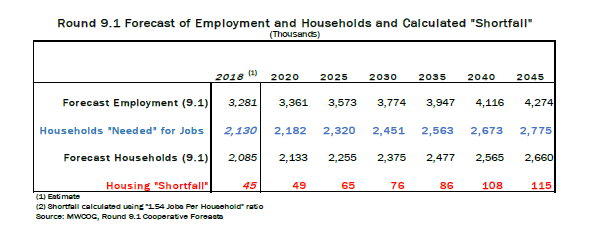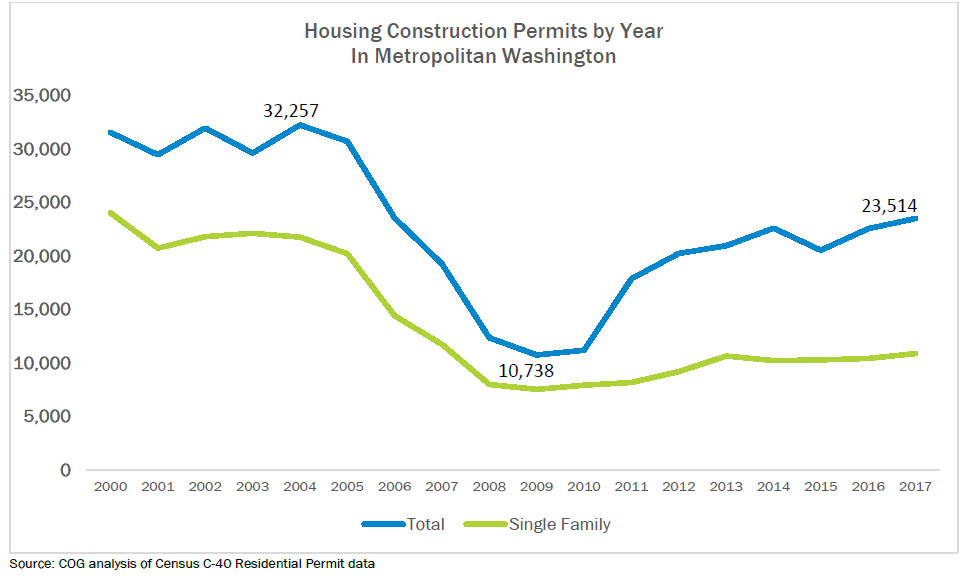The region needs to increase the number of planned housing units by over 100,000 homes between now and 2045 to sustain economic growth and improve quality of life, says a new Metropolitan Washington Council of Governments (COG) analysis.
At the September meeting of the COG Board of Directors, area officials passed a resolution acknowledging the region’s housing production challenges, and directing COG staff and government housing and planning directors to conduct additional research to address the shortage of affordably priced housing. This work will include considering incentives for adding units or weighing impediments like lack of critical public infrastructure.
Examining the extent that housing supply drives affordability in the region is “an approach that holds promise,” said COG Board Member Christian Dorsey, an Arlington County Board Member. “I love that COG is stepping into the fold to do something different.”
Calculating the Housing Shortfall
According to COG’s Cooperative Forecasts, comprised of official growth projections from area jurisdictions, employment growth currently outpaces housing growth in the region. This situation affects the area’s affordability, potentially undercutting its appeal to new companies and talent and necessitating commuting into the region for work, straining the transportation system. This “housing shortfall” is expected to worsen without intervention.
Using a widely accepted economic metric for “balancing” the number of households and jobs, the analysis showed the region needs, by 2045, more than 100,000 additional households than what is currently anticipated.
- The region’s employment base of 3.28 million jobs in 2018 would grow to 4.27 million by 2045—an increase of 990,000 jobs.
- The region’s 2.08 million housing units in 2018 would grow to 2.66 million by 2045—an increase of 575,000 housing units.
- Based on the “jobs-to-housing” metric mentioned above, the region would need to add 690,000 units by 2045 instead of the 575,000 currently assumed to close the housing gap.

Closing the Gap
According to the COG analysis, the region should increase the planned number of new housing units by slightly more than 100,000 by 2045 at all price points and types, with access to transit and other amenities to ensure a sufficient supply of housing for workers to fill current and anticipated jobs.
To meet short and long-term needs, the region would need a sustained annual housing production of at least 25,600 units per year. For comparison, more than 23,500 units were approved in 2017.

“Although this goal mostly addresses the region’s housing need from an economic competitiveness and transportation infrastructure standpoint, it will have broad significance for the future of our region and its residents,” said COG Executive Director Chuck Bean.
As part of its next steps, COG will convene its Housing Directors Committee and Planning Directors Committee to determine the capacity for additional housing units in priority places across the region such as in Activity Centers and near existing high-capacity transit stations.
MORE: Memo: Meeting the Region's Current and Future Housing Needs